
Click the above Computer Enthusiasts to follow us
In the new generation of 5G SoCs, the Snapdragon 765 series, Exynos 980, and Dimensity 1000L are performing a great show of the “Three Kingdoms”, equipping the Redmi K30 5G/OPPO Reno3 Pro/realme X50 5G, vivo X30 series, and OPPO Reno3, all of which are currently the hottest blockbuster 5G smartphones.

OPPO Reno3 Pro Review:How is a 5G Video Phone Made?!

realme X50 5G Review:A Dual-Mode 5G Phone That Dares to Compete!
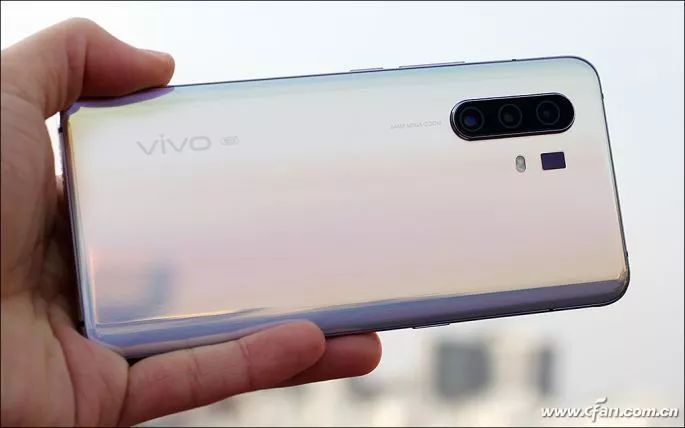
vivo X30 Pro Review:The “Telescope” Among 5G Phones
In terms of performance, the Dimensity 1000L plays the role of the “big brother”, leveraging the combination of ARM’s newly released Cortex-A77 CPU architecture and Mali-G77 GPU architecture in mid-2019, leaving the Snapdragon 765 series and Exynos 980 far behind.There’s no way around it, as the Dimensity 1000L has a close lineage with the higher-end Dimensity 1000, which integrates the Mali-G77MP9 GPU and has a CPU clock speed of up to 2.6GHz, making it a top contender against the Snapdragon 865 and Kirin 990.
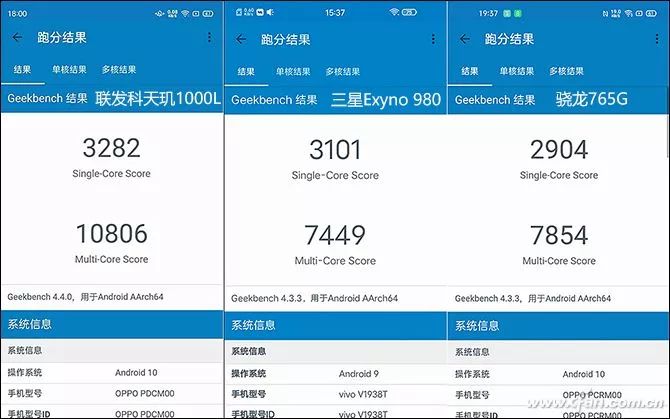
Performance Comparison of Dimensity 1000L, Exynos 980, and Snapdragon 765G
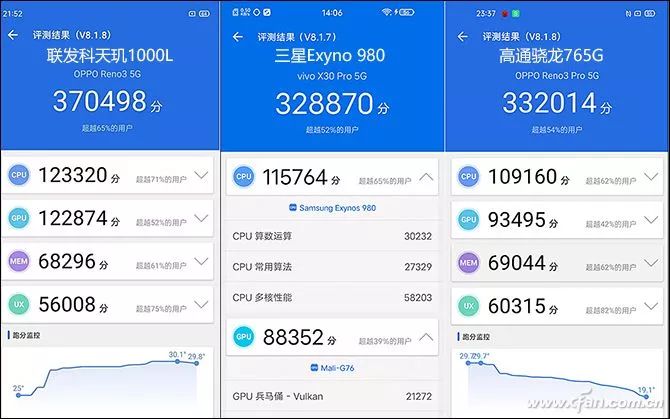
Performance Comparison of Dimensity 1000L, Exynos 980, and Snapdragon 765G
However, due to this, the Dimensity 1000L, as the younger sibling, also has a relatively high procurement cost, making it difficult to be used in 5G phones priced below 2000 yuan in the short term.
To compete for the market space of entry-level 5G phones, MediaTek has introduced the second member of the Dimensity family – the Dimensity 800 (MT6883).It seems that MediaTek’s classic Helio P series and G series will gradually fade into history in the 5G era.
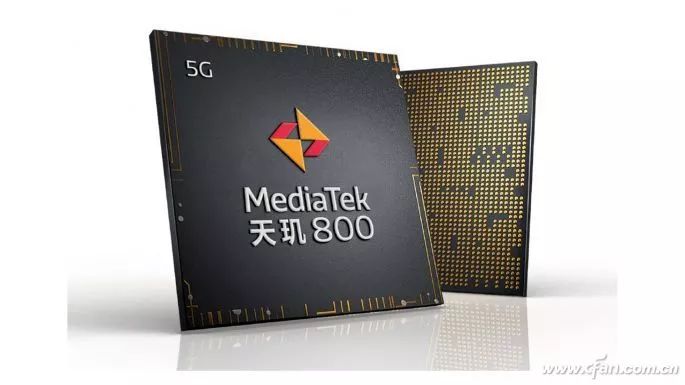
As the name suggests, the Dimensity 800 is definitely positioned lower than the Dimensity 1000 series, comparable to Qualcomm’s Snapdragon 7 series or 6 series.
In terms of specifications, the Dimensity 800 is a mixed bag.
The good news is that it also integrates the same Mali-G77 GPU as the Dimensity 1000 series, but the number of compute units has decreased from 7 in the Dimensity 1000L to 4, specifically Mali-G77MP4.
At the same time, the Dimensity 800 directly integrates MediaTek’s 5G modem in the SoC, supporting SA/NSA dual-mode networking, connectivity across 2G to 5G cellular networks, and dynamic spectrum sharing (DSS) technology.
Compared to external solutions, the integrated design of the Dimensity 800 can significantly reduce power consumption.This chip supports 5G dual-carrier aggregation (2CC CA), which expands the coverage of the 5G high-speed layer by 30% compared to other solutions that only support single-carrier (1CC no CA), enabling seamless switching of multiple connections and providing higher average throughput performance.
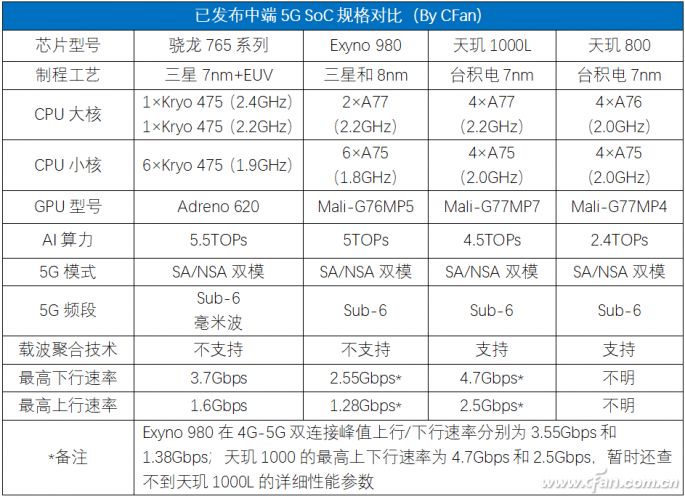
Unfortunately, the CPU of the Dimensity 800 is no longer based on ARM’s latest Cortex-A77 architecture, but rather the previous generation Cortex-A76, consisting of 4 cores at 2.0GHz A76 and 4 cores at 2.0GHz A55.Additionally, the Dimensity 800 integrates a unique 4-core architecture APU 3.0, composed of three different types of cores, providing 2.4 TOPs of AI performance.
From the above parameters, the CPU cores of the Dimensity 800 are relatively old, and the clock speed is too low, making it difficult for its performance to exceed the existing Snapdragon 765 series and Exynos 980, its main competitors. Its primary competition should be Qualcomm’s Snapdragon 6 series 5G SoC to be launched in the second half of the year, so do not have too high expectations for its performance.

Click “Read Original” for more exciting content